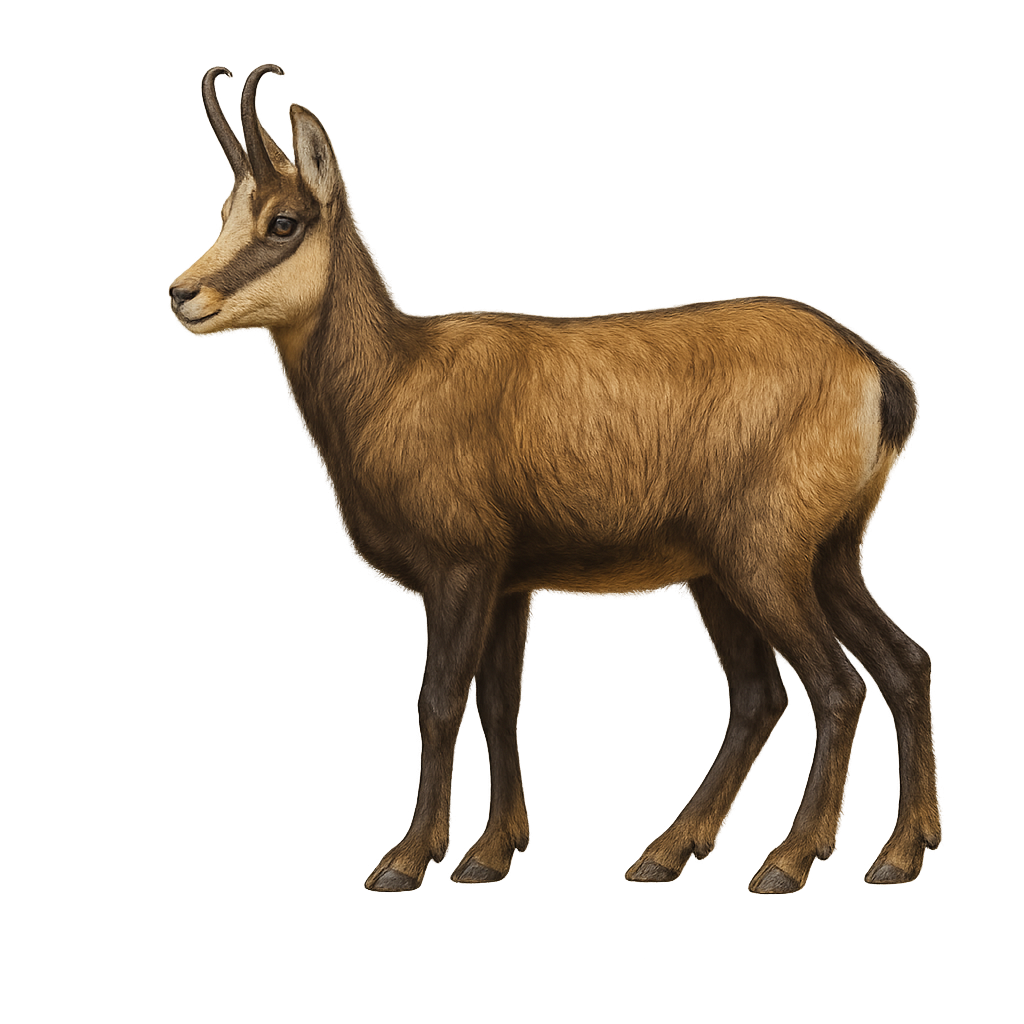Your wildlife photography guide.
Explore the alpine chamois in detail, study its behavior, prepare your shots.
Where to observe and photograph the alpine chamois in the wild
Learn where and when to spot the alpine chamois in the wild, how to identify the species based on distinctive features, and what natural environments it inhabits. The WildlifePhotographer app offers tailored photography tips that reflect the alpine chamois’s behavior, helping you capture better wildlife images. Explore the full species profile for key information including description, habitat, active periods, and approach techniques.
Alpine Chamois
Scientific name: Rupicapra rupicapra

IUCN Status: Least Concern
Family: BOVIDAE
Group: Mammals
Sensitivity to human approach: Suspicious
Minimum approach distance: 30 m
Rut period: November to December
Gestation: 170-180 jours
Births: April to May
Habitat:
Mountains and alpine forests
Activity period :
Primarily active during the day, with peak activity in the morning and late afternoon.
Identification and description:
The Alpine Chamois is an elegant and agile ungulate, well adapted to the mountainous environments of the Alps, Pyrenees, and other mountain regions of Europe. It is distinguished by its reddish-brown coat in the summer, which becomes more gray and thicker in the winter, helping it endure the cold temperatures. The Alpine Chamois has small, curved horns, present in both males and females, but larger in adult males.
This ruminant primarily inhabits rocky slopes, mountain forests, and alpine meadows, where it feeds mainly on herbaceous vegetation, mosses, and lichens. The Alpine Chamois is an excellent climber, able to move with agility over steep and rocky terrain. It is usually solitary or lives in small family groups, but may also gather in larger herds during the winter. Although its population is stable in many areas, the Alpine Chamois remains vulnerable to hunting and human disturbances in its mountainous habitats.
Recommended lens:
400 mm – adjust based on distance, desired framing (portrait or habitat), and approach conditions.
Photography tips:
Approach slowly and discreetly, using a telephoto lens to capture distant images, as the European chamois is an agile and rather timid animal that can easily flee if disturbed.
Photograph early in the morning or late in the afternoon, when the light is soft and the chamois is more active, often moving in rocky areas or grazing in alpine meadows.
Capture moments of natural behavior: The European chamois is an excellent climber, often observed on steep terrain. These moments of activity on rocks or during its movements can offer unique opportunities for spectacular photos.
Be patient and respectful: The European chamois can be difficult to spot in its mountainous habitat. Wait for moments when it is more visible without disturbing its natural behavior.
The European chamois is a species of least concern, but it is essential to respect its natural environment, especially the mountains and alpine forests. Do not disturb its feeding or breeding behaviors, and follow local conservation rules to preserve this species and its habitat.
The WildlifePhotographer App is coming soon!
Be the first to explore the best nature spots, track rutting seasons, log your observations, and observe more wildlife.
Already 1 450 wildlife lovers subscribed worldwide

